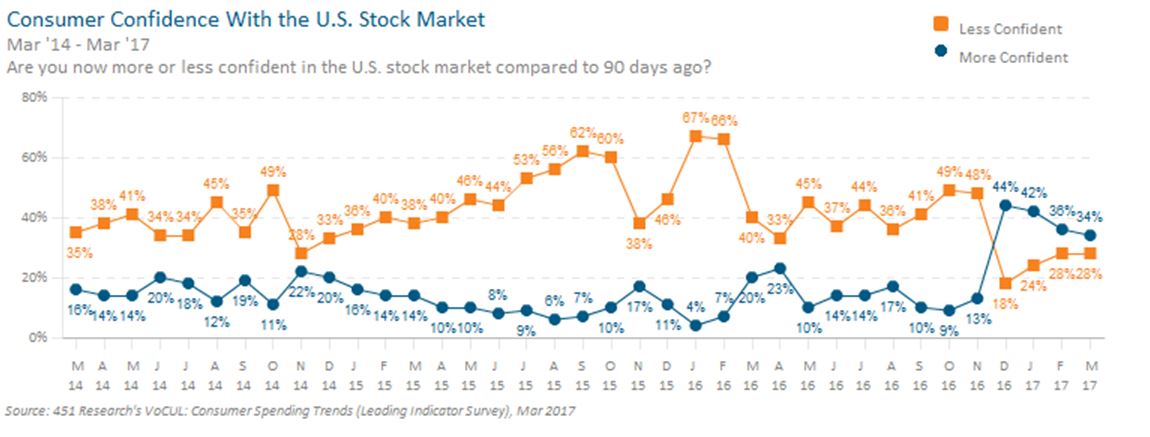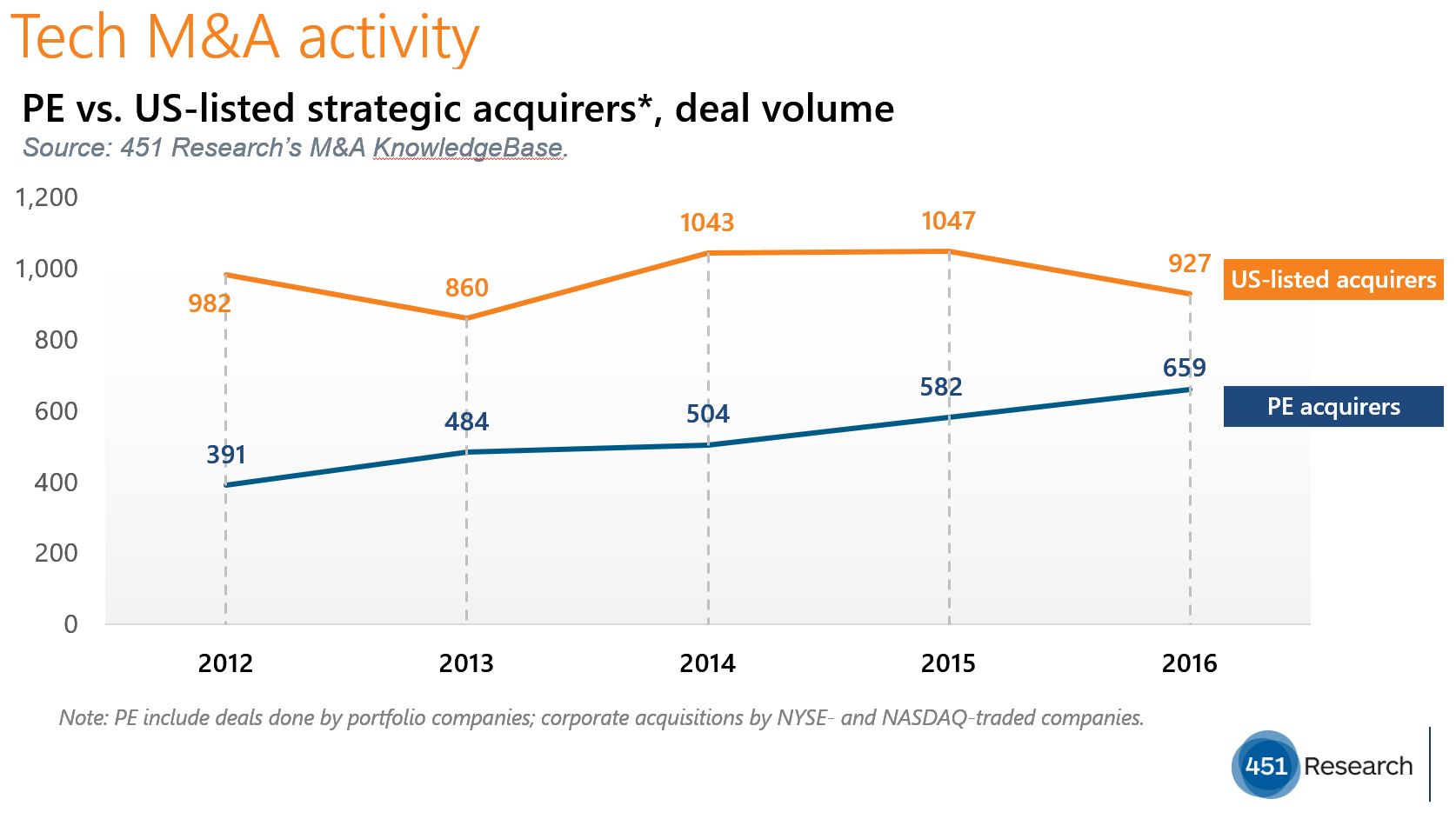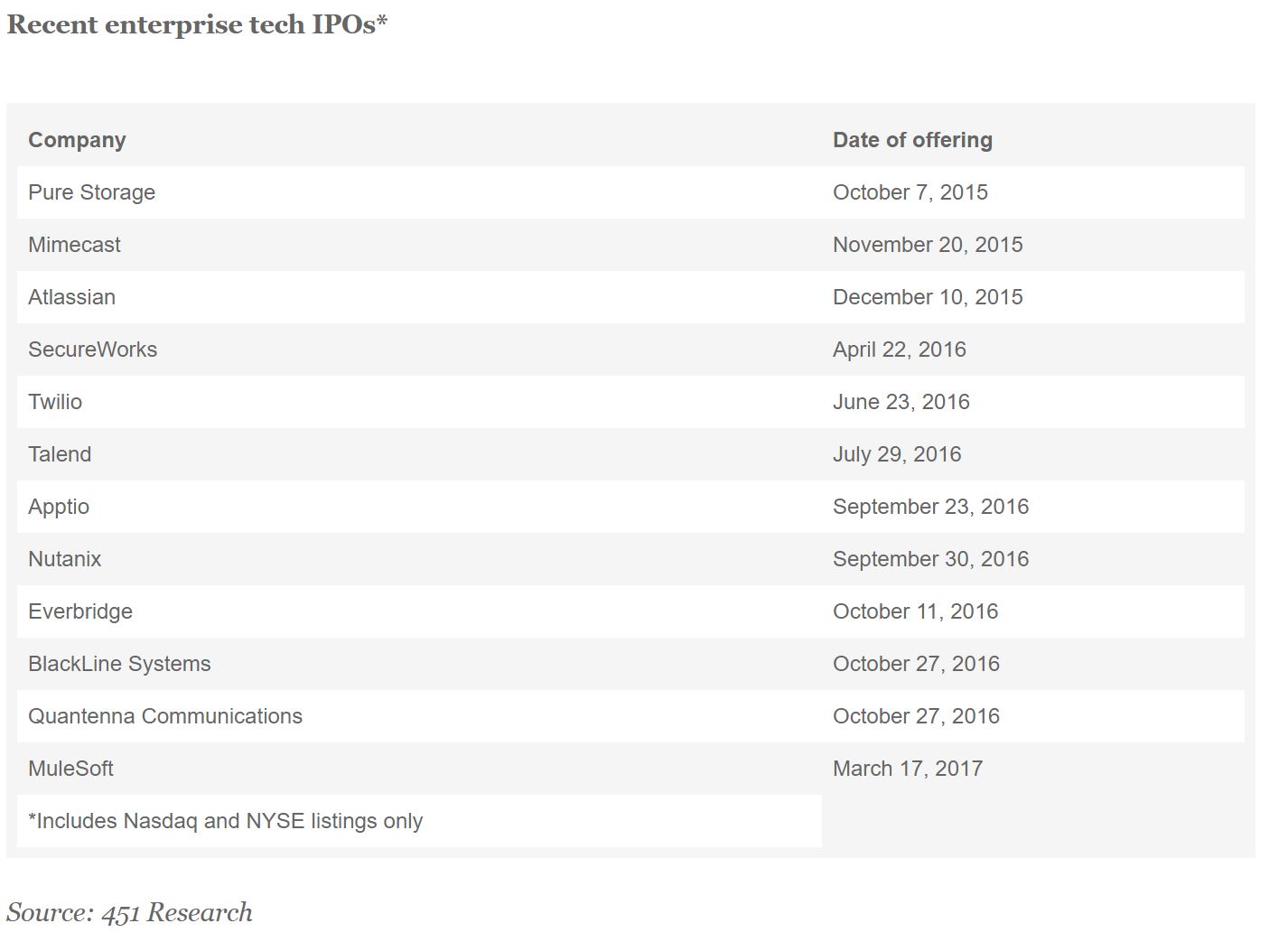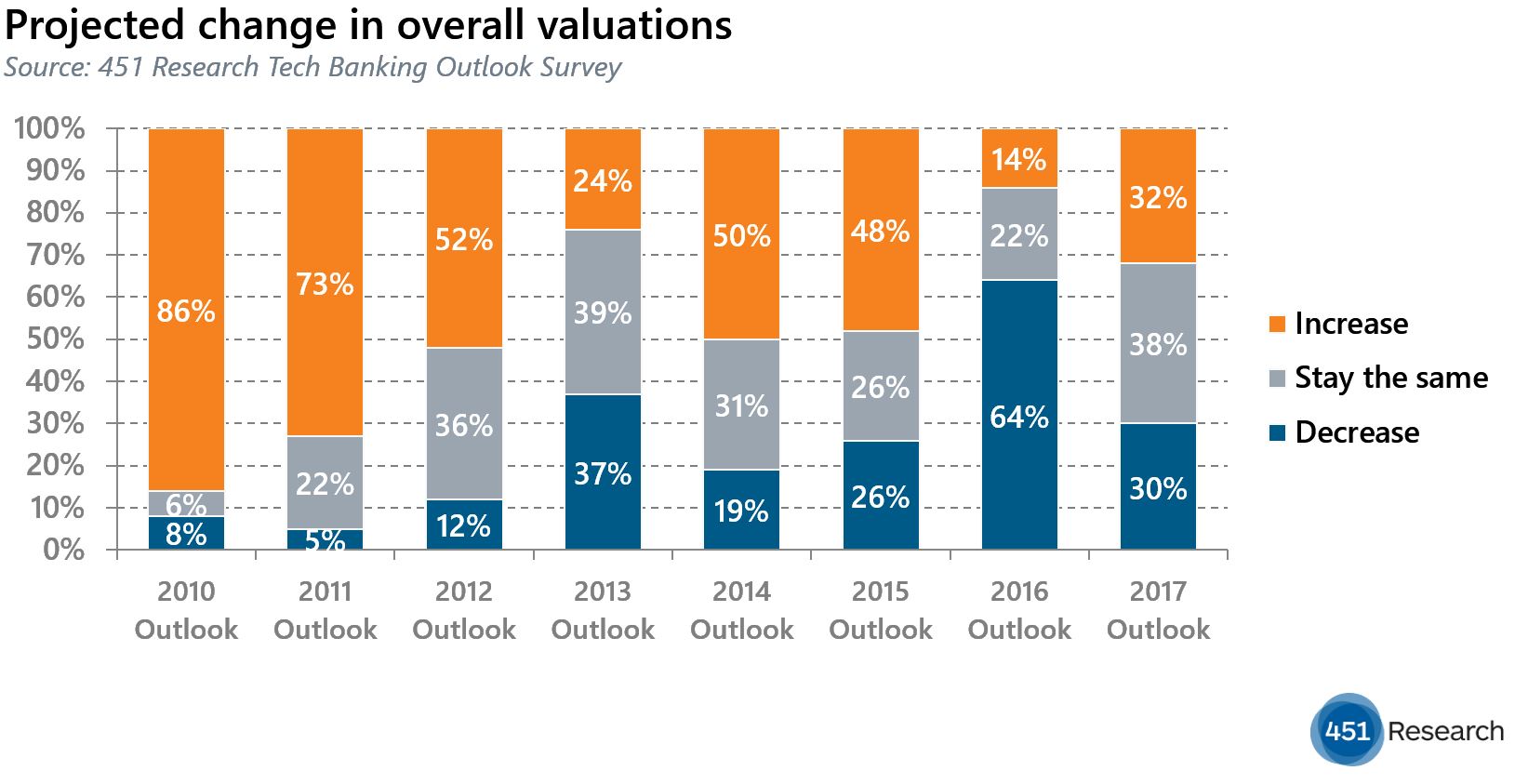Contact: Brenon Daly
Looking to extend the current bull run for enterprise software IPOs, Cloudera has taken the wraps off its prospectus and put itself on track to hit Wall Street in about a month. Assuming the debut follows that schedule, the heavily funded Hadoop vendor would be the third infrastructure software provider to come public in six weeks, following MuleSoft and Alteryx. Unlike the debuts of those two other software firms, however, Cloudera’s IPO will almost certainly be a down round.
Three years ago, when Cloudera’s quarterly revenue was less than half its current level, Intel acquired 22% of the company at a valuation of $4.1bn. Since then, both the company and other equity holders agreed that ‘quadra-unicorn’ valuation got a little ahead of itself and have priced Cloudera shares below Intel’s level of just less than $31 each. (In contrast, MuleSoft has more than doubled its final private market valuation on Wall Street.) Cloudera – along with its nine underwriters, led by Morgan Stanley, J.P. Morgan Securities and Allen & Co – should set the inaugural public market price for shares in about a month.
Because Wall Street likes to use a ‘known’ to help assign value to an ‘unknown,’ investors will look at Cloudera’s future trading valuation relative to the current trading valuation of fellow Hadoop provider Hortonworks. However, that comparison won’t particularly help Cloudera get any closer to its previous platinum valuation. Hortonworks currently has a market capitalization of just $650m, or 3.5x its 2016 revenue and 2.7x its forecast revenue for 2017.
The two Hadoop-focused companies actually line up fairly closely with one another, financially. Cloudera and Hortonworks hemorrhage money, largely because of huge outlays on sales and marketing. (Both firms spend roughly twice as much on sales and marketing as they do on R&D.) Cloudera is nearly one-third bigger than Hortonworks, recording $261m in sales in its most recent fiscal year compared with $184m for Hortonworks. Both are growing at about 50%.
Within that revenue, both Cloudera and Hortonworks wrap a not-insignificant amount of professional services around their product, which weighs on their margins and, consequently, their valuations. Both are consciously shifting their revenue mix. Cloudera is further along in moving toward a ‘product’ company, with professional services accounting for 23% of revenue in its latest fiscal year compared with 32% for Hortonworks. That progress is also reflected in the fact that Cloudera’s gross margins are several percentage points higher than those at Hortonworks, although both are still low compared with pure software providers. (For instance, MuleSoft, which also has a professional services component, has gross margins in the mid-70% range, about seven percentage points higher than Cloudera.)
With its larger size and more-efficient model, Cloudera will undoubtedly command a premium to Hortonworks. (That will come as a relief to Cloudera because if Wall Street simply valued the company at the same multiple of trailing sales it gives Hortonworks, Cloudera wouldn’t even be a unicorn.) We’re pretty sure Cloudera will come to market with a ‘three-comma’ valuation, but it won’t be near the $4bn valuation Intel slapped on it. Perhaps Cloudera can grow into that one day, but it certainly won’t start out there.






